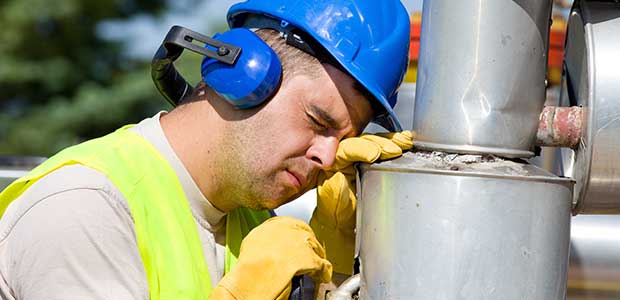
More Than Two-Thirds of Employees Are Tired at Work
A majority (90 percent) of employers reported feeling the effects of fatigue on their workplace, including declines in productivity and safety incidents involving tired employees, but only 72 percent of employees saw being tired as a safety concern.
According to a survey report released Oct. 1 by the National Safety Council, 69 percent of employees are tired on the job, which increases the risk of workplace injuries and incidents. The report focuses on results from high-risk industries where fatigue can have dire consequences for those in safety-critical positions.
The report, Fatigue in Safety-Critical Industries: Impact, Risks and Recommendations, summarizes the results of two national surveys. One survey was given to employers and the other was a probability-based survey given to employees. The report focuses on industries such as construction, manufacturing, transportation, and utilities, which often use shift work, a common risk factor for fatigue.
The surveys showed a difference in the ways employers and workers view risks and consequences of feeling fatigued at work. A majority (90 percent) of employers reported feeling the effects of fatigue on their workplace, including declines in productivity and safety incidents involving tired employees, but only 72 percent of employees saw being tired as a safety concern.
"We've been looking at the impact of fatigue in the workplace for a long time, but it is troubling to see just how affected our safety-sensitive industries are," said Emily Whitcomb, senior program manager of Fatigue Initiatives at the National Safety Council. "When you're tired, you can be deadly and these industries are already at higher risk because of their safety-sensitive jobs. We urge employers to address fatigue risk in their workplace so all employees can be healthy and safe."
Other findings from the report include:
- 97 percent of employers in the transportation industry feel the impact of fatigue.
- Almost all of employers (95 percent) in utilities said it is unsafe to drive while tired, but just 66 percent of employees in that industry agreed.
- 100 percent of construction workers report having at least one risk factor for fatigue.
- 46 percent of construction workers say they work during high-risk hours, such as at night or early morning.
- Transportation industry employees who reported at least one risk factor for fatigue cited long shifts (42 percent) and sleep loss (48 percent).
Lack of sleep costs $410 billion each year in societal expenses. The NSC has developed the Fatigue Cost Calculator to help employers determine how much fatigue is costing them and what steps can be taken to solve the problem. The NSC also offers the Fatigue Toolkit for the purpose of educating workers about causes and hazards of working and driving while fatigued.